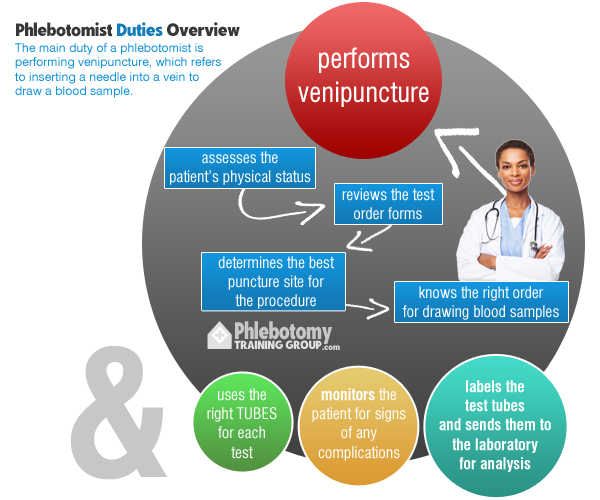Some Known Details About Northeast Medical Institute - New Haven Campus Phlebotomy Course & Cna Class
Some Known Details About Northeast Medical Institute - New Haven Campus Phlebotomy Course & Cna Class
Blog Article
The smart Trick of Northeast Medical Institute - New Haven Campus Phlebotomy Course & Cna Class That Nobody is Discussing
Table of ContentsSome Known Factual Statements About Northeast Medical Institute - New Haven Campus Phlebotomy Course & Cna Class Top Guidelines Of Northeast Medical Institute - New Haven Campus Phlebotomy Course & Cna ClassRumored Buzz on Northeast Medical Institute - New Haven Campus Phlebotomy Course & Cna ClassThe 6-Minute Rule for Northeast Medical Institute - New Haven Campus Phlebotomy Course & Cna ClassThe Best Guide To Northeast Medical Institute - New Haven Campus Phlebotomy Course & Cna ClassIndicators on Northeast Medical Institute - New Haven Campus Phlebotomy Course & Cna Class You Need To Know
The usage of such tools ought to be gone along with by other infection prevention and control methods, and training in their use.For setups with low resources, expense is a driving variable in procurement of safety-engineered tools - PCT Classes. Where safety-engineered gadgets are not offered, competent usage of a needle and syringe serves. Unintentional exposure and certain details regarding an occurrence should be recorded in a register. Support services need to be promoted for those that go through accidental direct exposure.
labelling); transport problems; interpretation of outcomes for clinical administration. In an outpatient department or facility, give a devoted phlebotomy workstation containing: a tidy surface area with two chairs (one for the phlebotomist and the other for the patient); a hand clean basin with soap, running water and paper towels; alcohol hand rub. In the blood-sampling space for an outpatient division or facility, offer a comfortable reclining couch with an arm remainder.
About Northeast Medical Institute - New Haven Campus Phlebotomy Course & Cna Class
Ensure that the indicators for blood tasting are plainly specified, either in a composed protocol or in documented directions (e.g. in a lab type). In any way times, adhere to the approaches for infection prevention and control detailed in Table 2.2. Infection avoidance and control techniques. Collect all the equipment needed for the procedure and location it within secure and simple reach on a tray or trolley, guaranteeing that all the things are clearly noticeable.
Introduce yourself to the individual, and ask the individual to state their complete name. Check that the lab form matches the patient's identification (i.e. match the person's information with the lab type, to guarantee exact recognition).
Make the person comfortable in a supine setting (preferably). Location a tidy paper or towel under the person's arm. Discuss the test to be executed (see Annex F) and obtain verbal permission. The person has a right to reject an examination at any moment before the blood sampling, so it is essential to make certain that the individual has recognized the procedure.
Northeast Medical Institute - New Haven Campus Phlebotomy Course & Cna Class - Questions
Extend the patient's arm and examine the antecubital fossa or forearm. Locate a vein of an excellent dimension that is visible, straight and clear.
DO NOT put the needle where capillaries are drawing away, since this increases the possibility of a haematoma. The vein must show up without using the tourniquet. Situating the capillary will assist in figuring out the appropriate dimension of needle. Apply the tourniquet regarding 45 finger widths over the venepuncture site and re-examine the capillary.
Haemolysis, contamination and visibility of intravenous fluid and medicine can all change the outcomes (39. Nursing team and doctors might access main venous lines for samplings adhering to protocols. Samplings from central lines lug a threat of contamination or incorrect laboratory test outcomes. It is acceptable, however not perfect, to attract blood samplings when initial introducing an in-dwelling venous tool, before linking the cannula to the intravenous fluids.
Getting The Northeast Medical Institute - New Haven Campus Phlebotomy Course & Cna Class To Work
Enable the location to completely dry. Failing to enable sufficient contact time boosts the risk of contamination. DO NOT touch the cleaned site; specifically, DO NOT put a finger over the vein to assist the shaft of the exposed needle. It the website is touched, repeat the sanitation. Perform venepuncture as adheres to.
Ask the individual to form a hand so the blood vessels are extra popular. Go into the vein swiftly at a 30 level angle or less, and proceed to present the needle along the blood vessel at the most convenient angle of entrance - PCT Courses. As soon as enough blood has been collected, release the tourniquet BEFORE taking out the needle
Some Known Factual Statements About Northeast Medical Institute - New Haven Campus Phlebotomy Course & Cna Class
Withdraw the needle delicately and apply gentle pressure to the site with a tidy gauze or dry cotton-wool round. Ask the patient to hold the gauze or cotton wool in place, with the arm expanded and elevated. Ask the individual NOT to bend the arm, since doing so triggers a haematoma.

About Northeast Medical Institute - New Haven Campus Phlebotomy Course & Cna Class
Do not press the syringe plunger because extra stress raises the threat of haemolysis. Where possible, maintain televisions in a rack and relocate the rack towards you. Infuse downwards right into the proper coloured stopper. DO NOT get rid of the stopper since it will certainly release the vacuum. If the sample tube does not have a rubber stopper, infuse exceptionally gradually right into the tube as minimizing the stress and speed utilized to transfer the specimen lowers the danger of haemolysis.

Report this page